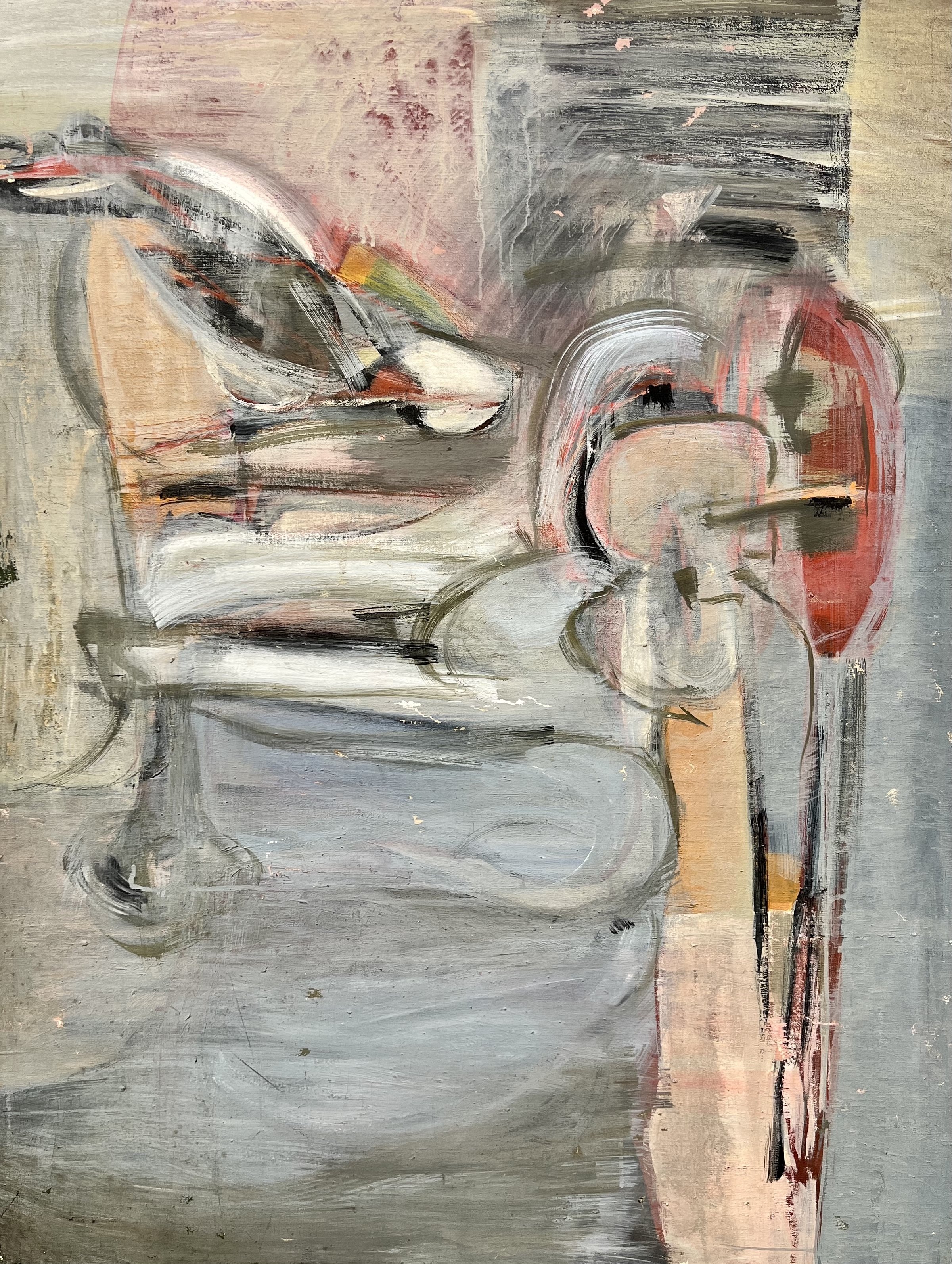Zoe Longfield
Zoe Longfield (1924–2013) was an American abstract expressionist artist in the San Francisco Bay Area and a participant in the first generation of Abstract Expressionism, which began primarily in New York and San Francisco in the last half of the 1940s.
Longfield was one of the earliest women artists working in this movement. During her brief active years, Longfield produced a significant body of paintings, prints, and drawings that showcase both deft handling of media and a unique visual vocabulary that she employed, in her words, to “solve those inherent problems peculiar to painting”
EDUCATION
Longfield studied painting at the University of California, Berkeley, from 1940–44. Her teachers included Margaret Peterson, John Haley, and Erle Loran, who helped found the “Berkeley School” of abstract expressionism. After graduating with a Bachelor of Arts degree in 1944, she continued her studies at the California School of Fine Arts (CSFA), the predecessor of today’s San Francisco Art Institute.
At CSFA, she had the opportunity to study under an extraordinarily innovative and influential faculty whose members included Clyfford Still, Richard Diebenkorn, Edward Corbett, and Mark Rothko. One of only a few women in her class, she studied alongside classmates Ernest Briggs, Edward Dugmore, Frank Lobdell, and others, forging several deep and lifelong friendships along the way. Longfield also studied briefly at the California Labor School, where she met her future husband, Rafael Etigson.
ART and INFLUENCE
Embracing Clyfford Still’s anti-commercial approach toward creativity, Longfield and eleven other students from his inner circle collaborated to open the Metart Galleries in April 1949. Derived from the term “metamorphosis” or “metaphysical arts,” the Metart Galleries was established as a cooperative where each member, for a small monthly fee, had use of the entire space for one month per year in order to exhibit his or her works. Occupying a former laundry on Bush Street in downtown San Francisco, the gallery was the first of a series of such cooperative art galleries in San Francisco during the 1950s. Each taking a month to individually show original works were artists Jeremy Anderson, Ernest Briggs, W. Cohantz, Hubert Crehan, Edward Dugmore, Jorge Goya, William Huberich, Jack Jefferson, Kiyo Koizumi, Zoe Longfield, Frann Spencer, and Horst Trave.
Although the gallery closed after only a year, it helped to launch the artistic careers of several of its members, including Briggs and Dugmore. Exhibits at the Metart earned acclamatory reviews in the San Francisco Chronicle by the well-known art critic Alfred Frankenstein, who wrote of his monthly visits there. Of Longfield’s show in December 1949, he wrote, “Of all the numerous artists who have taken up the new credo of arbitrary (or spontaneous) expression in unrestrained colors and unrestrained shapes, Miss Longfield impresses me as one of the most successful.” The gallery closed after a final exhibit by Clyfford Still in the spring of 1950. Still’s final Metart exhibit was highly anticipated and well-received. Soon after, he departed the San Francisco Bay Area for New York City.
Within the abstract idiom, Longfield experimented with both thicker and thinner paint applications, often employing techniques borrowed from watercolor painting such as applying thin washes of oil over the visible white primer of her canvases. Her paintings often include gestural lines that give both structure and movement to her compositions. She employed a vocabulary of forms that feel primarily organic but occasionally include more architectural elements. Frankenstein writes: “One of [Longfield’s paintings], titled No. 9, is a finely arranged creation of blues, blacks, and chalky white in which I, at least, detect something of a skull motif. I also enjoyed her symphonic treatment of bone-like shapes in powder blue and mustard yellow, labeled No. 4. But don’t press me for an explanation—it would be purely ectoplasmic.”
Longfield painted a number of noteworthy paintings, including Untitled (1949), a large piece currently held in the Crocker Art Museum collection. Her work also appears in the catalog for the Women of Abstract Expressionism exhibit (organized by the Denver Art Museum), as well as in several other significant collections.
Please direct all Zoe Longfield inquiries to Van Doren Waxter Gallery.
Zoe Longfield, Self-portrait, c. 1949
References
Press release for Metart Galleries, April 1949; Stable Gallery Papers, Archives of American Art, Smithsonian Institution, Washington, DC.
“Metart Gallery Experiment in Non-Commercial Exhibitions,” San Francisco Art Association Bulletin 15 (September 19049): n.p.
“New Metart Is Opened in San Francisco,” Berkeley Daily Gazette, September 22, 1949.
R.H. Hagan, “Around the Galleries,” San Francisco Chronicle, December 11, 1949.
“Zoe Longfield,” In San Francisco and the Second Wave: The Blair Collection of Bay Area Abstract Expressionism, by Scott Shields et al. (Sacramento, CA: Crocker Art Museum, 2004), 128-129.
“Women of Abstract Expressionism,” pp. 48–49; 184.
General References
Estate of Zoe Longfield



